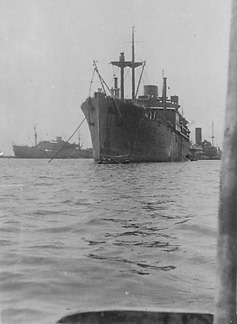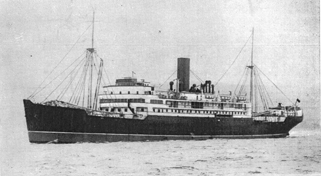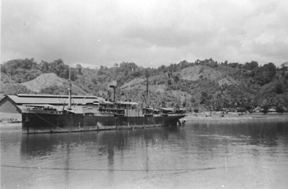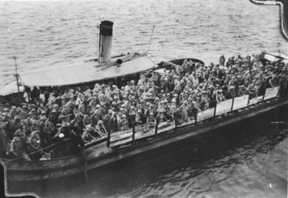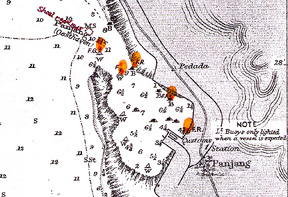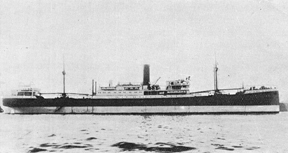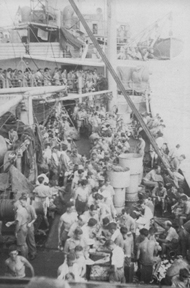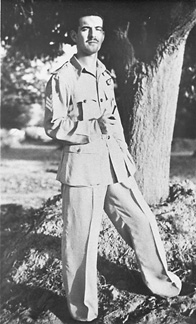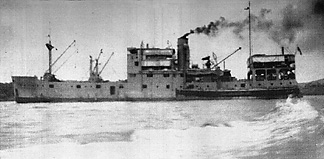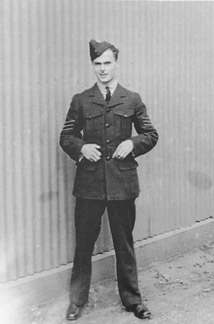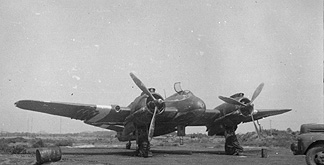 |
 |
||||||||||||||||||||||||||||||||||||||||||||||||||||||||||||||||||||||||||||||||||||||||||||||||||||||||||||||||||||||||||||||||||||||||||||||||||||||||||||||||||||||||||||||||||||||||||||||||||||||||||||||||||||||||||||||||||||||||||||||||||||||||||||||||||||||||||||||||||||||||||
|
The Far East 1942 and 1943—1945 From the Middle East to the Far East It is clear from the diary of WOp/AG Sgt JB Keeping 404295 RAAF that the Squadron was at “tidy days” for much of the first three weeks of January, with new arrivals gathering kit while aircraft were still being ferried to and from the Desert and Abu Sueir. Then, in late January 1942, they set off on the long air-route to the Far East across Iraq, India and Burma, heading for Sumatra in the Dutch East Indies. The Air Party Such an apparently stately progress served several purposes: security, utility, safety for stragglers, and reduced pressure on ground resources. On the other hand, compared with their history of rapid deployment, this move took much longer to arrange and execute - albeit over a combined stage length of over 6,000 miles instead of the 600-odd miles common to their Middle East days. Finding sufficient shipping to transport the Squadrons’ ground staff and equipment was an added difficulty. There were thus 72 aircraft en route from the Middle East to the Far East in January and February 1942. Other RAF re-inforcements were en route by air from the UK and by sea. While the level of urgency to reinforce the Far East may still not have been fully appreciated at command level in either theatre, the dispatch of a force of this size suggests some appreciation of the difficulties ahead. Compared with Squadron establishments current at the time of the Greek campaign, the 48 aircraft of the two Squadrons slated for the East Indies represented a potentially large force, the equivalent of four late 1940 units. Accordingly, at this stage of the war, each Squadron commanding officer had been advanced to Wing Commander rank, and Flight commanders to Squadron Leader. Accounts of the period differ. In recent retellings, it is commonly suggested that the original destination for 211 Squadron was Singapore, only altered en route to Sumatra. However, on submitting his Despatch in 1942, ACM Brooke-Popham noted 142. As aerodromes in Northern Malaya became untenable there was a danger of those in the South becoming too few to allow of adequate dispersal of the Royal Air Force Squadrons. The possibility of this had also been foreseen some months before war broke out and it had been decided in such an eventuality to move the bombing squadrons to Dutch aerodromes in Sumatra, retaining most of the fighter squadrons on Singapore Island. Up to the time that war broke out this remained little more than a project owing to the Royal Air Force staff being fully occupied with other work. At the end of December, however, the plans were well advanced, not only for the move of these squadrons but also for the possible establishment of an erecting depot in Java. Further, the post-war AHB narrative RAF Campaigns in the Far East Vol II, Malaya, Netherlands East Indies and Burma recorded that: “Sumatra and not Singapore was to be the destination of the re-inforcing Blenheim Squadrons—Nos 84 and 211—from the Middle East. They were scheduled to fly ahead of their ground personnel and equipment and AHQFE was advised accordingly.” The Narrative also makes it clear (p118) that 225 Group was setting up at Palembang in Sumatra by 18 January 1942, explicitly to command 84 and 211 Squadrons and the remnants of RAF and RAAF bomber Squadrons withdrawing from Malaya from 22 January: 27 Squadron RAF, 62 Squadron RAF, 8 Squadron RAAF, 21 Squadron RAAF and others. Written in 1947, AVM Maltby’s Report on Air Operations During the Campaigns in Malaya and Netherlands East Indies 8th December 1941—12th March 1942 (London Gazette, Supplement, February 1948) is in complete accord with those accounts. Certainly 84 Squadron, leaving a week earlier as part of the same re-inforcement movement, later recorded that their destination from the outset was Sumatra and Palembang (see, for example, 84 Squadron Operations Record Book AIR 27/702 f165) and Neate, Scorpion's Sting p52). The 211 Squadron Air Party included at least 6 aircrew survivors of the Squadron’s Greek campaign, the full complement of aircrew at this date numbering at least 72 and perhaps 90 or more in all. The number of groundcrew airmen is harder to check. The Squadron strength on departure for the Far East seems to have been about 500 in total, from the fragmentary records available. For comparison, likewise posted with 24 Blenheim IVs to the Far East, 45 Squadron left Egypt with at least 103 aircrew, while 84 Squadron took 484 groundcrew to support their aircraft and 33 complete aircrews. In this first Far East campaign, 45 of the aircrew have now been identified with reasonable confidence as RAAF personnel—16 of these men were subsequently lost in action in the Squadron in Sumatra and Java.
One of 211 Squadron’s Mark IV Blenheims on the way to the Far East in January 1942, still in desert paint, the Squadron 2-letter UQ code not in use. Serial no not legible in my print. The Sea Party Escorted by HMS Cornwall, Yoma arrived at Colombo on 1 February to join convoy JS1, part of the hastily assembled Operation Stepsister movement of 2nd AIF and other troops from the Middle East to the Far East and Australia from mid-January 1942. The other elements of Stepsister were the ships of JS3 leaving on 30 January, and the much faster liner Orcades, departing Port Tewfik alone as JS2 on 1 February. Although it has been suggested that Cap St Jacques was also involved, that is not the case. Having been held up in Bombay for repairs since Boxing Day 1941, she sailed from there on 3 January 1942 for Singapore, where she arrived on 23 January. Three days later she sailed again for Bombay, arriving on 12 February and remaining for more repairs until 19 February before departing for Basra. Cap St Jacques did not voyage from Port Tewfik, nor from Colombo, nor yet to Oosthaven, in January or February 1942.
Port Tewfik was the major war-time port of Egypt and of RAF Middle East for convoys to and from the UK (voyaging south-about via Freetown and the Cape of Good Hope), and from Australia and the Far East. Tewfik was thus the port of embarkation for the 211 Squadron Sea Party departing for the Far East in January 1942. The voyage is recounted by Len (Abbie) Abbs and by Len Cooper. The vessel may be of the Stepsister convoy JS1, but for the moment is unidentified. Proceeding first to Colombo, they paused there to refuel and reorganize. On 3 February, their division of JS1 sailed for Sumatra. Their escort was HMS Cornwall until 10 February, then HMAS Hobart and HMS Exeter who took them on to Oosthaven. There, Yoma, Filleigh, Lulworth Hill, Hai Lee and Ermion made port on 14 February 1942. It was to be a short stay, as Len Abbs later recalled. Still, by 17 February 1942 Yoma was in port at Batavia where, on 20 February, among others she took aboard 132 men of 84 Squadron, plus some number of civilians, for evacuation that day to Colombo with convoy SJ5. Arriving safely there on 1 March, she sailed again with Bombay-bound convoy C5 early on 2 March, from thence to Karachi on 15 March.
SS Yoma was built for P Henderson and Co of Scotland by Denny’s and launched in 1928 for the Far East trade, in joint-ownership with the British and Burmese Steam Navigation Co. She was 8,139 gross register tons and equipped with quadruple-expansion engines capable of 14 knots. In her day, she was a popular passenger steamer. Put to service as a troopship, she did not survive the war. In convoy from Tripoli to Alexandria with some 1800 troops aboard, she was sunk by U-81 NW of Derna on 17 June 1943. Hit by two torpedoes, Yoma went down stern-first within five minutes, with the loss of her captain George Paterson MBE and 483 troops and crew. Thanks to the close attendance of a group of HM minesweepers and another merchant ship, 1477 troops and crew were saved. Blenheims in Malaya and the East Indies 1942 211 Squadron in Sumatra Squadron aircraft reached Palembang (the P2 satellite field) in South Sumatra progressively from 2 February to 6 February, from individual personal accounts. Some, with poor briefing or encountering poor weather, experienced difficulty in finding either L’honga or nearby Koetaradja on arrival, while for others the leg on to Pakenbaroe was difficult. Eventually at least 19 aircraft completed the journey. While staging through Lho’nga, on 2 February the Squadron had made an early return to operations, with a reconnaissance flight for a reported Japanese aircraft carrier by Cuttiford & co in Z7622 and Coughlan & co in Z9660. They saw nothing, perhaps fortunately. By 6 February, with 16 aircraft on hand at Palembang (P2), the Squadron was about to resume operations in earnest. The convoy escort task of 7 February resulted in the loss of two Australian crews, Z9713 (Sgts Bott, Lynas and Lamond) and Z7586 (Sgts Steele, Menzies and Gornall), and of F/Lt Linton RAF in Z9659 who died the next day. The Kluang night raid on 10 February claimed the lives of S/Ldr Ken Dundas DFC and his RAAF crew in Z7699. By 11 February, 211 was reported to have had six serviceable Blenheims available at P2 (however, on withdrawal from Sumatra 5 days later, Bateson led ten aircraft, each with crew and five passengers, across the Java Sea to Batavia). As observed elsewhere, the attempted night raid on 11/12 February was a disaster, with two aircraft of 211 Squadron and one of 84 Squadron crashing on take off thanks to poor flare path layout. Clutterbuck and his Observer, Newstead died, the gunner Joerin surviving. Further losses on the afternoon of 13 February saw two aircraft and four aircrew, all RAAF (Mackay, Oddie and Payne lost in the jungle, and McInerney lost on ditching, only the RAF pilot Chalmers and RAAF gunner 402202 Sgt GM Kendrick surviving). The following two days saw intense air activity against the Japanese landing force, around Banka Is and the Moesi River, Cuttiford and co contributing. Meanwhile, the 211 Squadron Sea Party had arrived at Oosthaven aboard HMT Yoma on Saturday 14 February. Len Abbs, Tom Henderson and others recalled this, not unnaturally, as occuring the day before: Friday the 13th, “unlucky for some”. However, original ship and port records of the time, and accounts of the Operation Stepsister convoy JS1, all confirm that HMT Yoma arrived at Oosthaven on 14 February. The 211 Squadron contingent of 400-odd groundcrew and spare aircrew were lightered ashore that afternoon. After an abortive railway journey towards Palembang early the next morning, they returned later that day or the next and re-embarked on the Yoma, slipping at dusk for Batavia. The next day, 17 February 1942, they arrived at Tanjong Priok, the port of Batavia in Java, without having met up with the air echelon. Orcades arrived on 15 February and then made for Batavia where she, too, took part in the evacuation of Java as recounted by Len Abbs.
Bill Maitland, an RAAF pilot of 211 Squadron, was apparently among the large Squadron party who had reached Sumatra aboard Yoma. On 15 or 16 February they reboarded Yoma, remaining at moorings in Oosthaven until dusk. Here Maitland has caught the KPM ship van der Hagen alongside the wharf. She had made port that day, carrying troops and equipment including anti-aircraft guns, according to the master of another Dutch vessel in port. Built in 1909 and of 3,030 gross register tons, she was one of many such vessels engaged in the East Indies trade, in which KPM (Koninklijke Paketvaart Maatschappij: the Royal Dutch Packet Navigation Company) was the major player. From January 1942 to 8 March 1942 when Java fell, KPM lost no less than 79 vessels in Far East waters. Among them was van der Hagen, sunk there at Tjilatjap. She was raised and put to service by the Japanese, only to be sunk again at Maizuru Bay in Honshu by American air action. Dick Schouten in Holland went to great lengths to help find a sound identification for this little ship. Hardly a war-like posture, on first look. However, the apparent sparseness of the facilities alongside may simply be a trick of the angle of view. From the various lines in shot, this photograph seems to have been taken from another vessel, at moorings, almost certainly Yoma. Although just one godown is visible, it is a permanent structure of corrugated iron and in good condition on this day (although to be destroyed within days to deny the port facilities to the Japanese). To the far right, there is a rake of wagons in a railway siding close to the shoreline, consistent with Oosthaven. To the immediate left of the wagons, slightly lower and closer to the shore there may be a light AA mounting, though it could well be a small goods crane.
The port facilities included a steam tender and lighterage. Like Jim Fryatt and Mick Dudman's shots at Poerwokerto, the men aboard the lighter stand in an orderly, well presented body with RAF STs aplenty. In his own description, Bill described this as ”Troops coming aboard at Ersthaven during evacuation of Sumatra”. Together, his two photographs and description are consistent with other known events and port layout at Oosthaven on 14 February 1942. This second shot is apparently of the 211 Squadron rear echelon, re-embarking Yoma by lighter that day. Bill was doubly lucky with this sort of caper: 16 days later he was evacuated from Tjilatjap in Java, aboard Tung Song.
The port area at Oosthaven in Lampung Bay, from the British Admiralty chart Plans on the South Coast of Sumatra Sheet 3611, in the National Library of Australia (MAP G5741.P5). The small highlights are the essential mariner’s aids in peace and war: leading lights. 211 Squadron in Java On 21 February, one or perhaps two Flights took off to raid Palembang, with the loss of another 211 Squadron aircraft and crew: Sgt Burrage, with F/Lt Stewart Observer and Sgt McDonald WOp/AG. This may well have been the last operation in which 211 Squadron took part. It was not, however, their last casualty before the surrender. Over the next week, further aircraft and aircrew losses brought orders from the AOC for the remaining aircraft to be pooled under 84 Squadron, which was done on 25 February. From 26 February, 211 Squadron groundcrew in Batavia and the aircrew and groundcrew at Kalidjati began withdrawing through Bandoeng, to gather at Poewokerto for possible evacuation from the South coast port of Tjilatjap on 2 March; or attempted escape or captivity on surrender, 8 March 1942. At Kalidjati, 84 Squadron continued to mount operations until the airfield was over-run on 1 March 1942, It appears that 211 Squadron’s last casualty occurred on that day: Sgt RD Mohr 400019 RAF was last seen on the ground near Kalidjati but no more was ever heard of him. With the limited shipping available, the hard choice had been made to evacuate aircrew and other skilled trades by sea, other personnel perforce remaining to fall captive as Len Abbs so vividly recalled. Kota Gede
Built at Rotterdam in 1928 for Rotterdamsche Lloyd and registered in Batavia, Kota Gede was a motor vessel of some 7300 tons. Accounts of the evacuees, vivid but sparse, suggest at least 21 men of 211 Squadron boarded the ship at Tjilatjap: P/O EP Coughlan (Pilot) RAF F/O WR Cuttiford (Pilot) RAAF Sgt LC Hill (Pilot) RAF F/O GS Hodges (Pilot) RAAF Sgt RL Crowe (WOp/AG) RAF LAC HG Billington 649538 (Flight Mechanic, Engine)
Jack Woodward, a Sgt Observer of 27 Squadron, was one of the lucky ones. After withdrawal from Butterworth and Singapore with the remaining 27 and 62 Squadron Blenheim Is on 22 January 1942, at Palembang (P2) he and his pilot W/O John “Jock” Kennedy and WOp/AG Sgt Gordon “Clicker” Clarke carried out operations against the Japanese invasion force. Withdrawing to Java, Kennedy successfully force-landed Blenheim I L8396 (still wearing 62 Squadron codes FX-N) in a padi field. Safely making their way to Batavia and Kalidjati they faced ground attack and ultimately withdrawal to Tjilatjap to board Kota Gede early in the morning of Friday 27 February 1942 with 2,150 other evacuees.
Richardson was certainly aboard Kota Gede. His Pilot (Coughlan) and Observer (Cummins) also survived, presumably also evacuated aboard Kota Gede. P/O EP Coughlan 47209 was in fact an old 211 Greyhound: posted in as Sergeant Pilot Edward Patrick Coughlan 580252 for the move to the Middle East in April 1938, he remained with them through their conversion to the Bristol Blenheim. Posted elsewhere in July 1939, he was commissioned in September 1941, rejoining his old Squadron by early 1942. Sgt PLD “Arch” Cummins was a Kiwi who had joined the RAF in 1938. He was posted to 230 Squadron as an Observer in early 1939 until June 1941. Tour expired, he had spent six months instructing at 70 OTU in Kenya before joining 211 Squadron in December 1941 as they worked up for the Far East action. The Tung Song evacuees
Photographed by armourer 911029 AC1 Ron Lovell from the ship’s launch, Tung Song as fitted out for duty as tender to No 205 (Flying Boat) Squadron. A lighter lies alongside, aft. Although partly obscured by the lighter, the original image shows the sweep of her counter-stern, with the poop accommodation extending right aft. When built in 1928 for the Straits Steamship Co of Singapore, she was pretty typical of the smaller merchant vessels of the Malay Straits trade: a twin-screw triple-expansion steamer of 436 gross register tons and 152ft 6in overall, catering for trade and deck passengers with limited cabin accommodation. She was given a major refit in 1936: converted to fuel-oil, lengthened with another hatch forward, adding accommodation decks amidships and on the poop. These alterations increased her length to 183ft 8in, her draft from 8ft 6in to 10ft 1in and her tonnage to 549, thus reducing her speed by 2 knots to 8 knots. It was in this state that she was requisitioned by the RAF in late 1939, for service with 205 Squadron. Post-war, she survived until 1958. In this form she arrived at Tjilatjap in March 1942, one of the last vessels available for evacuation duty before the surrender of Java on 8 March. Despite strenuous efforts by the Royal Navy to organise and clear available shipping at Batavia and Tjilatjap, the Dutch surrender saw many thousands of British Commonwealth servicemen stranded, among them some 5,100 RAF men, of whom at least 346 were 211 Squadron personnel. Conditions for evacuees from Java aboard Tung Song are illustrated by the photographs of Squadron CO RN Bateson DFC, and of AC1 Armourer Jim Fryatt. The story of the 200-odd civilian and military evacuees who boarded the ex-Straits steamer has been told in rich detail by Hugh Campbell and Ron Lovell in So Long Singapore. They eventually arrived safely at Fremantle, the principal port of Western Australia, on 12 March1942. There, the RAAF’s No 5 Embarkation Depot was ready and able to deal with pay, kit, leave and accommodation for airmen arriving en masse. As usual in the Services, to do all that, forms had to be filled in and reports written. At 5ED they made a laconic (and numerically garbled) summary entry in their ORB and then, as they dealt with the arrivals and sent them on East, compiled the name, rank, no and mustering of each man in the weekly Personnel Occurrence Report - the mysterious POR that appears so often against service record entries. Without the POR system, details of postings, leave and other information could get hopelessly entangled, the more so when RAAF and RAF personnel were mingled and in transit over half the world. Such was their importance that the reports were roneo copied for distribution. While the RAF versions (in vaster volume, of course) have long since been “weeded”, in the National Archives of Australia a complete RAAF set exists. There 5 Embarkation Depot reports are still held safe, as Series: A10605 Control symbol 435/1 and 435/2. Thus I found them some years back, seeking records to help Hugh and Ron complete the Tung Song story. Volume I (435/1) and Volume II (435/2) can be viewed on-line through the NAA digital archive. 211 Squadron: Fremantle 13 March 1942
Allen DW AC1 1293927 Brown, H 567975 Sgt Fitter II
Some of the Squadron personnel (Jim Fryatt, for example) were re-kitted on reaching Melbourne—hence the darker blue of Sgt Brown’s uniform in this shot from the late Mick Dudman’s collection: RAAF blue. Mick’s own caption, from among his post-evacuation shots. F/Sgt JA Gore 563780 Squadron strength and fates 1942 While Mick Dudman later recalled that “The Squadron personnel on the ship, plus a number of Army personnel, numbered more than 550” the 1942 strength of the Squadron on moving to the Far East seems to have been about 500, of whom there is now a record of 446 named individuals. The summary below shows that, of that initial strength, 19 men (that is, all aircrew) died in action while 180 men died in captivity. At least 86 men (and perhaps as many as 140) were evacuated to continue their war service from mid-1942 onwards. Of the 346 men made PoW in 1942, 166 survived captivity to return to the UK in 1945. In all about half the strength of the Squadron in the 1942 campaign, at least 252 men, survived to eventually return home.
There were at least 24 three-man crews flying the Squadron’s 24 aircraft (72 men), certainly with some spare crews with the Sea Party, possibly 90 or more in total (for 84 Squadron: 24 Blenheims, 33 crews, 99 men). In total, 450 men of 211 Squadron have been accounted for by name to date, 64 of them aircrew. That leaves perhaps 50 or more men still to be recorded, either aircrew or groundcrew. Apart from the 65 men aboard Tung Song and at least 21 aboard Kota Gede, it is also known that at least some 211 Squadron men were aboard Yoma when she departed Batavia for Colombo on 20 February with civilian, 34 Squadron and 84 Squadron evacuees. It also seems likely that there may have been more men of the Squadron among the large (and unlisted) party of service personnel evacuated on 27 February 1942 by Kota Gede—both aircrew and groundcrew. The brief formal record of her passage to Colombo gives no more than the voyage dates. There may be rolls of the service personnel aboard Yoma and Kota Gede, still to be found. Some RAF and RAAF men were aboard MS Abbekerk (departed Tjilatjap 27 February, arrived Fremantle 4 March) and MS Zaandam (departed Tjilatjap 1 March, arrived Fremantle 7 March) however, none of the arrivals listed in 5 Embarkation Depot records can be shown to have been of 211 Squadron. Likewise, no 211s are known to have been aboard MV Janssens (departed Tjilatjap 4 March, arrived Fremantle 13 March). The RAF FEPoW roll published by the Stubbs’ is a very great achievement, from difficult source materials. Although ranks, musterings and trades are not shown, further checking of names and service numbers found only two aircrew survivors (H Wright and NR Jeanes) in addition to the two aircrew deaths (HV Lewis and CG Sharley) already known. In compiling rolls for the 211 Squadron FEPoWs, no more aircrew were identified. The RAF in Sumatra and Java In the period immediately before surrender to the Japanese, about 7,000 RAF personnel were among the many servicemen evacuated from Sumatra and Java (although not all made it to safety). The remainder, including 5,102 RAF men, were among the large number of personnel taken PoW. The Far East Prisoners of War endured the most extreme privations at the hands of their captors. Civilians, women and children fared little better. While in Japanese captivity, 1,714 RAF personnel died: that is, about 33% or one in every three. Of those RAF men known to have lost their lives in captivity, 619 lost their life at sea aboard Japanese vessels transporting them for forced labour, 362 of them aboard ships sunk by Allied submarines. To put all that in perspective, a simple comparison will suffice. In the European theatre, of 9,879 RAF PoWs captive in Germany, 152 died: about 1.5% (or one in every 65). 211 Squadron losses 1942 The approximate total personnel strength of the Squadron in the 1942 campaign was about 500, as noted above. While at least 87 men are known to have been evacuated, at least 346 men (five of them aircrew) were made PoW, of whom 180 perished, including two aircrew. There were 166 known FEPoW survivors (three of them aircrew). The Far East Campaign 1943—1945: the RAF in India and Burma August 1943 found 211 Squadron re-forming in Northern India. At Phaphamau (near Allahabad on the Ganges, “beloved of her people”) they were to work up for Bristol Beaufighter operations in the second Burma campaign. With an initial strength of 16 aircraft, the Squadron personnel numbered about 330 on resumption of operations in January 1944, with 24 complete two-man crews (Pilot and Navigator/Wireless or Nav/W for short).
Bristol Type 156 Beaufighter Mark X M Mother NV526, Chiringa 1945 (D Marsh-Collis)
In the year and a half from January 1944 to May 1945, the Squadron was heavily engaged against Japanese ground and air forces, flying 1790 sorties and destroying 25 aircraft, 223 locomotives, over 600 motor transports, large numbers of watercraft, and numerous other ground targets. In that time they lost 33 aircraft on operations. In the first nine months of 1944, 50 aircrew were lost on operations. At that time, “tour” length was set at 300 operational hours and no crews were able to reach that goal. After the reduction to 200 operational hours in late 1944, six of the original 24 two-man crews did survive to complete their “tours” with 211 Squadron.
Among others present: F/Sgt Taff "Chiefy" Jones, second from left, front, in blues. Possibly W/O Ray Wood (pilot) behind and right of Jones. Cpl Ted Ede standing to the left and partly behind the central bamboo pole. To the right of the pole, apparently an NCO pilot also in blues. In contrast, during the early period of their Burma operations, CO S/Ldr Pat Meagher DSO DFC scored a number of victories against Japanese opponents, becoming a Beaufighter ace in the process. Standing down in late May 1945, they were converting to the de Havilland Mosquito FB VI in June and July, with the expectation of taking part in the liberation of Malaya planned for September, Operation Zipper. In August VP Day came at last, forestalling their resumption of offensive operations. By then, some Squadron personnel were already being repatriated. Once more at operational readiness, after some delay the Squadron moved to Thailand with its Mosquitoes in November 1945, only to disband there in March 1946, after a period of unserviceability following repeated inspections of their aircraft found structural weaknesses. The history of operations in India and Burma prepared on the spot by the late Peter Spooner gives a clear, concise view of operations and another sobering set of personnel rolls. More detail of the continuing Canadian and Australian presence in the Squadron has slowly emerged, with four RAAF personnel, 19 RCAF personnel, and one South African identified. 211 Losses 1943-1945 Of the 18 aircrew taken captive in the course of air operations over Burma, two were shot on capture, 12 survived the horrors of Rangoon Gaol, yet sadly four men died there. Sources Commonwealth War Graves Commission records RAN Merchant Ship Movement Records Stirling Castle 1941—1942 RAAF Aircraft Loss Cards via D Norman Cull B correspondence with author re Joerin, Henderson Report: Evacuation of RAF through Oosthaven, Sumatra Grp Cpt Nicholetts TNA AIR 23/2158 (via L Richards @rcre) Air Ministry Index to Airmen and Airwomen, National Archives UK AIR 78 Air Ministry Wings of the Phoenix (HMSO 1949)
www.211squadron.org © D Clark & others 1998—2025 |
||||||||||||||||||||||||||||||||||||||||||||||||||||||||||||||||||||||||||||||||||||||||||||||||||||||||||||||||||||||||||||||||||||||||||||||||||||||||||||||||||||||||||||||||||||||||||||||||||||||||||||||||||||||||||||||||||||||||||||||||||||||||||||||||||||||||||||||||||||||||||

